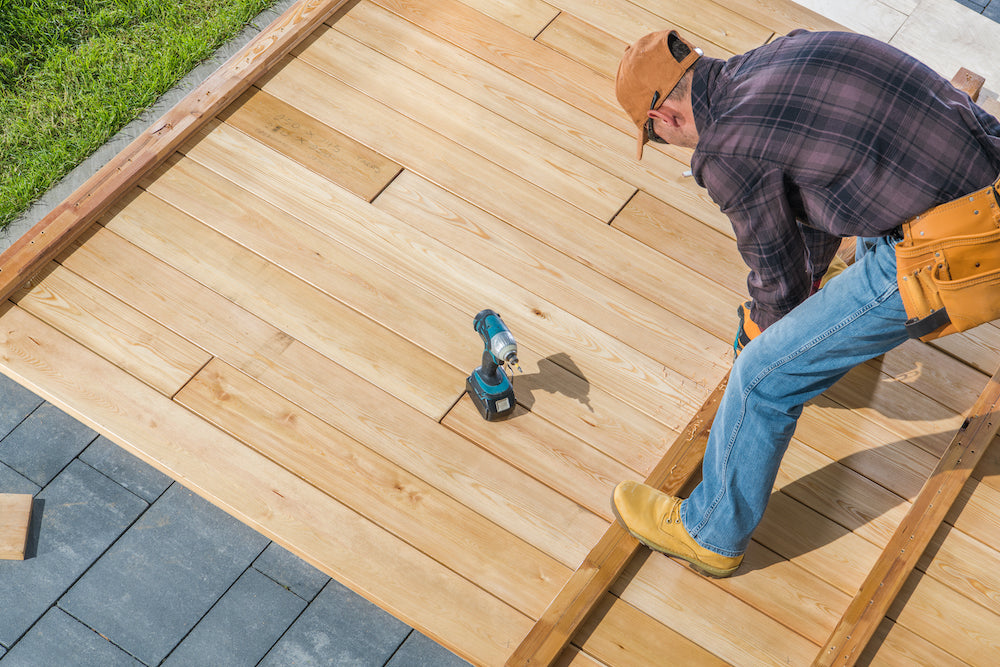A well-designed patio can be the heart of your outdoor space, providing the perfect setting for relaxation, entertaining, and enjoying the outdoors. If you’re looking to elevate your patio, DIY decking is an excellent option. With careful planning, some basic tools, and a weekend of work, you can transform an ordinary patio into a stylish, functional deck that enhances your home’s exterior. This guide will take you through the steps to create a beautiful deck that you can be proud of.
Why Choose DIY Decking?
DIY decking offers homeowners the chance to customize their outdoor space without the high costs associated with professional installation. A deck can serve as an extension of your indoor living area, offering a versatile space for dining, lounging, or hosting gatherings. By taking on this project yourself, you have the flexibility to design a deck that suits your specific needs and complements your home’s style.
Planning Your Deck
The first step in your DIY decking project is planning. Start by assessing your patio area to determine the size and shape of the deck. Consider how you plan to use the space—whether it will be a dining area, a place to relax, or a play space for kids—and design accordingly. You’ll also need to choose materials, taking into account factors like durability, maintenance, and your budget.
Materials and Tools Needed:
-
Materials:
- Pressure-treated lumber or composite decking boards
- Concrete deck blocks or piers
- Deck screws or hidden fasteners
- Gravel for drainage
- Weed barrier fabric
- Wood stain or sealer (if using wood decking)
- Joist hangers and brackets
-
Tools:
- Circular saw or miter saw
- Power drill
- Tape measure
- Level
- Shovel
- Post hole digger (if using concrete footings)
- Safety glasses and gloves
Step 1: Preparing the Site
Begin by preparing the patio area where the deck will be built. Clear away any furniture, plants, or debris. If your patio is currently paved, you may need to remove some of the pavers or bricks to accommodate the deck’s foundation. Ensure the ground is level, or make adjustments as needed to create a flat surface.
Pro Tip: Lay down a weed barrier fabric before starting construction to prevent weeds from growing up through the deck.
Step 2: Laying the Foundation
A strong foundation is crucial for a stable deck. Depending on your patio’s current condition, you can either build the deck directly on the ground using concrete deck blocks or create a raised deck with footings. Concrete deck blocks are ideal for ground-level decks, while footings are better suited for raised structures.
-
Concrete Deck Blocks: Place the blocks in a grid pattern, making sure they are evenly spaced and level. Adjust the gravel beneath the blocks to achieve a level surface.
-
Footings: Use a post hole digger to create holes for the footings, ensuring they extend below the frost line to prevent shifting. Pour concrete into the holes and set the deck posts, making sure they are plumb and level.
Pro Tip: Use a string line to ensure that all deck blocks or footings are aligned correctly. This will help keep your deck square during construction.
Step 3: Building the Frame
Next, build the deck’s frame, which consists of the perimeter joists that outline the deck’s shape and the inner joists that support the decking boards.
-
Perimeter Joists: Attach the perimeter joists to the deck blocks or posts using joist hangers and brackets. Check that the frame is square by measuring diagonally from corner to corner.
-
Inner Joists: Install the inner joists between the perimeter joists, spacing them according to the manufacturer’s recommendations (typically 16 inches apart). Secure each joist with joist hangers, and ensure they are level and parallel.
Pro Tip: Add blocking between the joists to prevent them from twisting over time. This will add extra stability to your deck.
Step 4: Installing the Decking Boards
With the frame in place, it’s time to install the decking boards. Start at one end of the deck and work your way across, leaving a small gap between each board for expansion and drainage.
-
Wood Decking: Screw the boards directly to the joists, countersinking the screws slightly to avoid tripping hazards. For a cleaner look, consider using hidden fasteners, which are installed between the boards for a seamless finish.
-
Composite Decking: Follow the manufacturer’s instructions for installing composite decking, using specific fasteners designed for the material. Trim any overhanging boards with a jigsaw for a polished look.
Pro Tip: Stagger the ends of the decking boards to create a more natural appearance and help distribute the load evenly across the deck.
Step 5: Adding Finishing Touches
After installing the decking boards, it’s time to add the finishing touches that will complete your project. This might include installing a railing, adding steps, or applying a stain or sealer to protect the wood.
-
Railing: If your deck is raised, a railing is essential for safety. Install the posts first, then attach the top and bottom rails. Finish by attaching the balusters, making sure they are evenly spaced.
-
Steps: If your deck is elevated, you’ll need steps for easy access. Use the same materials as your deck and build the steps to match the deck’s height and width.
-
Staining or Sealing: If you’ve used wood decking, apply a stain or sealer to protect the wood from moisture, UV rays, and wear. Choose a product that enhances the wood’s natural beauty while providing long-lasting protection.
Pro Tip: Apply the stain or sealer in thin, even coats, allowing it to dry fully between applications. This will ensure a smooth, durable finish that keeps your deck looking great for years to come.
Step 6: Enjoying Your New Deck
With the deck complete, it’s time to enjoy your new outdoor space. Furnish it with comfortable seating, a dining table, or even a hammock, and make the most of your transformed patio.
Pro Tip: To maintain your deck’s appearance and longevity, clean it regularly with mild detergent and water. Inspect the deck annually for signs of wear or damage, and reapply stain or sealer as needed.
Conclusion
Transforming your patio with DIY decking is a project that not only enhances your outdoor living space but also adds value to your home. With careful planning, attention to detail, and a bit of hard work, you can create a beautiful, functional deck that reflects your style and meets your needs.
Take your time, enjoy the process, and soon you’ll have a stunning deck that becomes the centerpiece of your outdoor living area. Happy decking!








Reader Interactions